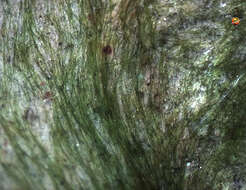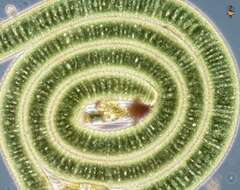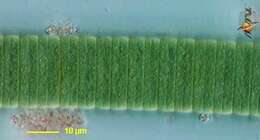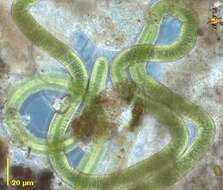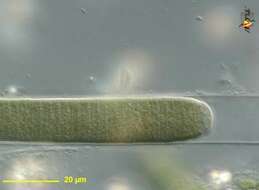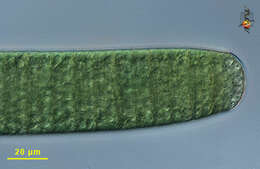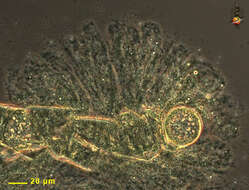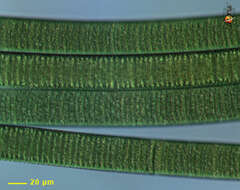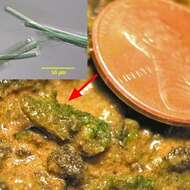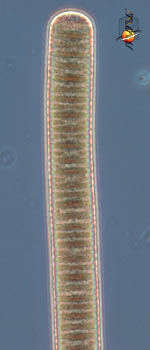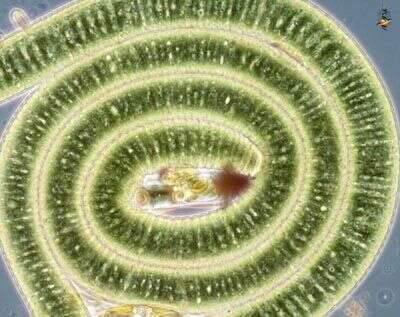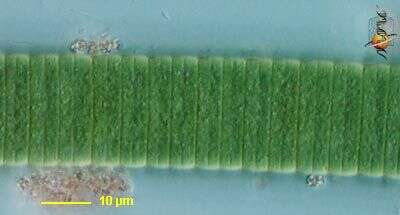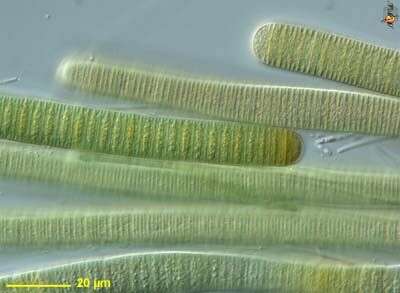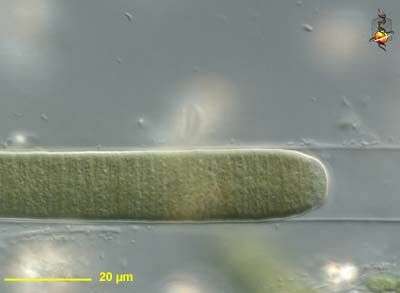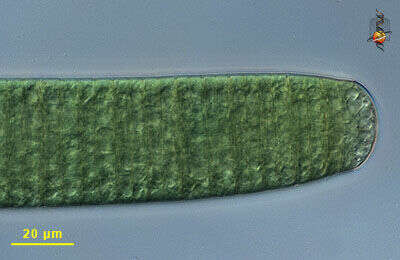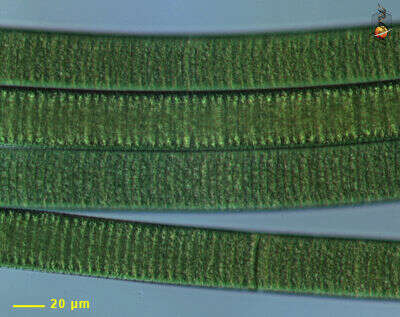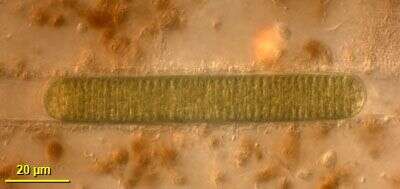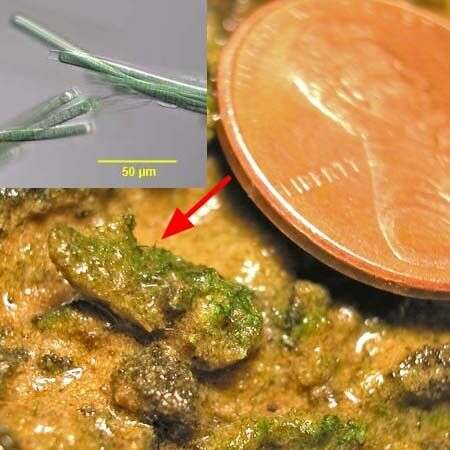-
Small region of mud with filaments of Oscillatoria forming a thin layer over the surface.
-
Lyngbya (ling-bee-a) is a filamentous cyanobacteria usually have many cells joined together. They are often motile, gliding through the substrate. Probably the oldest recognizable organisms on Earth - traceable back to the earliest fossils, over 3 billion years old. Some are producers of toxins, some have nitrogen fixing abilities. etc. Phase contrast.
-
Lyngbya (ling-bee-a) is a filamentous cyanobacteria usually have many cells joined together. They are often motile, gliding through the substrate. Probably the oldest recognizable organisms on Earth - traceable back to the earliest fossils, over 3 billion years old. Some are producers of toxins, some have nitrogen fixing abilities. etc. There are many disc-shaped cells joined end to end to make up the filaments. The filaments can be huge, dwarfing not only many protists but also many metazoa. The organisms are photosynthetic, and also can glide slowly. Phase contrast.
-
Lyngbya (ling-bee-a) is a filamentous cyanobacteria usually have many cells joined together. They are often motile, gliding through the substrate. Probably the oldest recognizable organisms on Earth - traceable back to the earliest fossils, over 3 billion years old. Some are producers of toxins, some have nitrogen fixing abilities. etc. There are many disc-shaped cells joined end to end to make up the filaments. The filaments can be huge, dwarfing not only many protists but also many metazoa. The organisms are photosynthetic, and also can glide slowly. Differential interference contrast.
-
Lyngbya (ling-bee-a) is a filamentous cyanobacteria usually have many cells joined together. They are often motile, gliding through the substrate. Probably the oldest recognizable organisms on Earth - traceable back to the earliest fossils, over 3 billion years old. Some are producers of toxins, some have nitrogen fixing abilities. etc. There are many disc-shaped cells joined end to end to make up the filaments. As can be seen from this community photograph, the filaments can be huge, dwarfing not only many protists but also many metazoa. The organisms are photosynthetic, and also can glide slowly. Phase contrast.
-
Lyngbya (ling-bee-a - although the man+s name is pronounced Lung-boo) a filamentous blue-green alga (cyanobacterium), fairly substantial and usually found with a sheath around each filament. Differential interference contrast.
-
Lyngbya (ling-bee-a ) a filamentous blue-green alga (cyanobacterium), fairly substantial. This image shows the mucus sheath which encloses each filament. Differential interference contrast.
-
Lyngbya (ling-bee-a - although the man+s name is pronounced Lung-boo) a filamentous blue-green alga (cyanobacterium), fairly substantial and usually found with a sheath around each filament. Phase contrast micrograph.
-
Rather large filamentous blue green alga - the filament is made up of many disc-shaped cells attached end to end. Differential interference contrast optics.
-
This filament of Lyngbya has been squashed and the cytoplasm has been extruded from the cells. The photosynthetic pigments that provide the green colour are distributed throughout the cytoplasm. Phase contrast microscopy.
-
Filaments of this blue-green (cyanobacterial) alga are formed of disc-shaped cells joined end to end. The filaments can glide slowly.
-
Short length of this filamentous blue green alga within its stiff mucus sheath. From a surface film formed by large numbers of iron bacteria. Differential interference contrast optics.
-
Rewetted cryptobiotic soil crust. Lyngbya species (red arrow and inset) and Microcoleus species predominate.Collected from high desert sagebrush habitat in the Escalante national Monument, Utah,37°48'17" N ,111°32'45" W. September 2007.Reflected light macrophotograph (inset microphotograp,DIC).
-
Plectonema (plecked-owe-knee-ma) is a filamentous cyanobacterium. Individual cells are more or less cylindrical, but typically have rounded ends and may be a little swollen centrally. The cells move slowly within a sheath - which can be seen here external to some dead cells of the filament. These particular cells were not particularly strongly coloured. Phase contrast.

